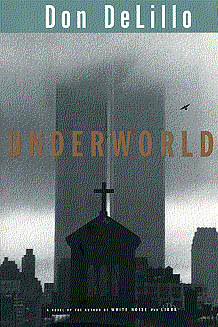Underworld

Well, it took me over a month, but I finally made it through the 827 pages of Don DeLillo's novel Underworld. I had the book sitting around the apartment, and when it came in second in the poll of Best American fiction of the last 25 years, I figured it was a good time to tackle it.
The book is difficult to summarize it. I suppose the easiest brush-stroke is that it concerns American in the Cold War era, with the fulcrum being October 3, 1951. That is the day that the Giants beat the Dodgers with Bobby Thomsen's home run, and the day the Soviets tested an A-Bomb.
The book begins with a tour-de-force chapter describing the game. It is seen through the eyes of a young black kid who sneaks into the game and ends up grabbing Thomsen's home-run ball. Also at the game are J. Edgar Hoover, Frank Sinatra, and Jackie Gleason.
Over the course of the book the ball's progress as it changes hands is documented. We also are taken to such wildly diverse places as Truman Capote's Black and White Ball, nightclub appearances by Lenny Bruce during the Cuban Missile Crisis, and Bronx pool halls.
While the writing is superb, with several paragraphs polished like gems, I'm not sure it all added up to anything for me. DeLillo seems to lose track of some of his threads. A very minor subplot about a Texas highway killer is dropped, only to be quickly mentioned in the book's closing pages. After a book that long, with that many characters and plots, I expected more of a stunning conclusion.
Incidentally, the cover of the book, which shows the World Trade Center and what looks to be a plane flying nearby, is certainly ominous, considering this book was written some ten years before 9/11/2001.


Comments
Post a Comment